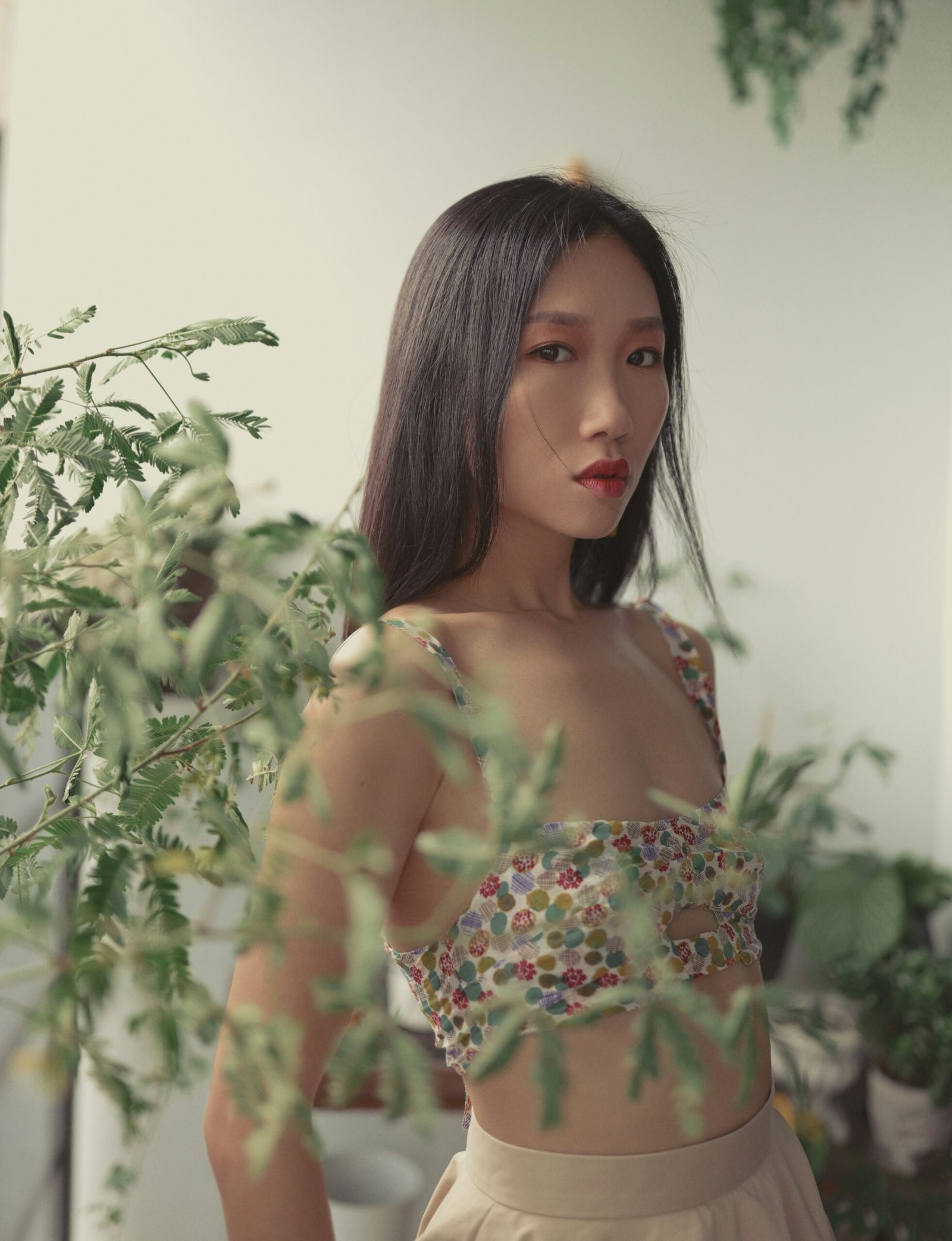Understanding Color Theory: The Basics
Color theory forms the cornerstone of coordinating makeup with clothing effectively. At its core lies the color wheel, a circular diagram first developed by Sir Isaac Newton, which helps in visualizing relationships between colors. The wheel is segmented into three primary colors: red, blue, and yellow. Combining these primary hues results in secondary colors – orange, green, and purple. Further mixing these secondary colors yields tertiary colors, which include red-orange, yellow-orange, yellow-green, blue-green, blue-purple, and red-purple.
Upon mastering the basic structure of the color wheel, it’s vital to understand how these colors interact through monochromatic, analogous, and complementary schemes. Monochromatic schemes involve using varying shades, tones, and tints of a single hue, creating a cohesive and serene look. Analogous schemes use colors adjacent to each other on the color wheel, delivering a harmonious and not overly contrasting visual. Complementary colors, positioned opposite each other on the wheel, offer the highest contrast and, when used thoughtfully, can make outfits and makeup pop.
Another crucial aspect is recognizing warm versus cool tones. Warm tones, such as reds, oranges, and yellows, can evoke energy and warmth, and tend to complement warmer skin undertones. In contrast, cool tones – including blues, greens, and purples – often induce calmness and align well with cooler undertones. Determining the undertone of your skin can refine your choices; for instance, warm undertones usually have peachy, yellow, or golden hues, while cool undertones exhibit pink, red, or blue hues. Neutral undertones possess a mix of both warm and cool characteristics.
Practical application in makeup and clothing coordination starts with identifying these undertones in your skin as well as your wardrobe. For instance, ivory, golden, and earth-tone clothing will likely enhance warm undertones, whereas silver, lavender, and jewel-toned apparel are more flattering to cool undertones. By mastering these color relationships, one can achieve a harmonious balance that enhances both the attire and the makeup, ensuring an impeccable overall look.
Matching Makeup to Different Clothing Styles
The relationship between makeup and clothing style is pivotal in creating a cohesive and polished look. Whether for a casual outing or a formal event, aligning makeup with the chosen attire ensures harmony and highlights your overall ensemble. Adjusting makeup intensity and style based on the occasion and outfit type can significantly enhance your appearance. Here, we offer tailored recommendations for seamlessly pairing makeup with diverse clothing styles.
For casual outfits, such as denim jeans paired with a simple tee, opt for a natural makeup look. Light, neutral eyeshadows, a touch of mascara, and a subtle blush will keep the look fresh and effortless. A soft nude or pink lipstick can complete this understated style, maintaining an easy-going vibe. As your outfit transforms into a more playful and relaxed style, incorporating brighter hues like pastel eyeshadow or a pop of colored eyeliner can add a fun twist without overwhelming the simplicity of casual wear.
When dressing for formal occasions, such as evening gowns or tailored suits, the makeup should be more sophisticated and defined. Smoky eyes accompanied by bold, precise eyeliner and voluminous lashes exude elegance and complement the formality of the attire. Pair this look with a classic red or deep plum lipstick for a touch of timeless glamour. To further accentuate the sophistication, opt for a more contoured face with defined cheekbones using strategic highlights and shadows.
Vintage styles, characterized by polka dots, lace, or retro-cut dresses, beg for makeup reminiscent of their era. Winged eyeliner, matte red lips, and a well-defined brow can recreate a vintage-inspired image. Soft, rosy blush applied to the apples of the cheeks ties in a classic touch that enhances the retro vibe of the outfit.
Modern and edgy clothing styles, featuring sharp lines, bold patterns, or avant-garde designs, often pair well with statement makeup. Think graphic eyeliner, metallic eyeshadows, and unconventional lipstick colors like deep purples or blacks. The key is to balance the boldness, ensuring that the makeup complements rather than competes with the statement piece of clothing.
Transitioning from a daytime casual look to an evening formal appearance can be achieved with strategic adjustments to makeup. A quick way to elevate the look is by intensifying eye makeup with deeper shades and metallic touches, switching to a bolder lipstick, and adding more definition to the face through contouring techniques. Updating your makeup to match the varying styles of your outfits not only complements the attire but also boosts confidence, making every look feel complete and appropriate for the occasion.
Seasonal Makeup and Fashion Coordination
Coordinating your makeup and clothing according to the seasons can elevate your overall appearance, making you feel confidently aligned with the time of year. Each season brings its own distinctive color palette and trends, which should be considered in your makeup routine.
In spring, embrace the rejuvenation of nature with fresh, pastel tones. Soft pinks, light greens, and gentle yellows can be seamlessly integrated into your makeup. Opt for dewy foundations and subtle highlighters to mimic the natural glow of spring. Spring fashion generally favors floral patterns and light fabrics, making it a perfect match for delicate, understated makeup looks.
Summer calls for bold and vibrant hues. Think bright blues, vivid corals, and sunny yellows. Waterproof and long-lasting makeup products are essential to withstand the heat and humidity. Coral lipsticks, bronze highlighters, and eyeliners in teal or turquoise can complement the breezy and colorful summer attire featuring tropical prints and airy fabrics.
As autumn arrives, the color palette shifts to rich, warm tones. Earthy browns, burnt oranges, and deep reds dominate the season. Matte foundations and bold lip colors like burgundy or pumpkin spice are ideal. Eyeshadow palettes featuring autumnal shades can perfectly match the cozy, layered clothing styles prevalent in fall fashion, such as plaid patterns and chunky knits.
Winter makeup should enhance the cool, crisp feeling of the season. Think icy blues, deep plums, and frosty silvers. Full-coverage foundations and hydrating products are necessary to combat dry winter air. Smoky eye looks and berry-toned lipsticks pair well with the luxurious fabrics and darker colors typically seen in winter fashion, such as velvet and tweed.
Incorporating seasonal trends into your makeup and wardrobe allows for a harmonious, polished appearance throughout the year. Popular products like waterproof mascaras for summer, or hydrating primers in winter, are valuable additions to your makeup kit. Adapting your routine to the seasonal changes ensures that your look is always fresh and current.
Tips and Tricks from the Experts
Professional makeup artists and fashion stylists agree that coordinating makeup and clothing can elevate your entire look when done thoughtfully. The first step begins with creating a versatile beauty arsenal. Essential makeup products every wardrobe should have include a reliable foundation, a universally flattering nude lipstick, a versatile eyeshadow palette, and a classic eyeliner. These staples allow for a range of looks, from day to night, with just a few adjustments.
For quick hacks, experts recommend mastering the art of multitasking products. For instance, a cream blush can double as a lip tint, while a highlighter can also serve as an eyeshadow. When you’re pressed for time, focus on one statement feature—bold lips, smoky eyes, or glowing skin can make a significant impact with minimal effort.
Avoiding common mistakes is crucial for a polished appearance. One frequent error is neglecting the balance between makeup and clothing. Wearing a vibrant outfit? Opt for neutral makeup to complement rather than clash. Conversely, a minimalist wardrobe color scheme can be enhanced with a pop of bold lipstick or striking eyeliner. Additionally, always consider the occasion: subtle makeup is more suitable for professional settings, while bolder choices may be reserved for social events.
Staying updated on current trends, yet adapting them to fit your style, is another expert tip. The resurgence of glossy finishes or the popularity of monochromatic looks can be tailored to your preferences. For instance, if metallic eyeshadows are trending but don’t suit your everyday style, consider incorporating just a hint within your preferred makeup routine.
To further refine your coordination skills, numerous resources are available. Online tutorials and courses from reputable beauty schools offer hands-on guidance. Additionally, curated lists of recommended products and step-by-step guides can be invaluable. Leveraging these tools can not only enhance your proficiency but also inspire creativity in how you pair makeup with your wardrobe.


